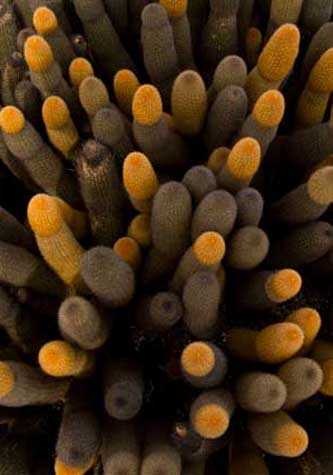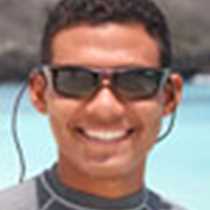The wind is gentle and so is the ocean as we navigate to our next destination. The National Geographic Endeavour has arrived at the youngest island on the Galapagos Archipelago; it is Fernandina. Less than a million years old and surrounded by fresh black lava, the landscape is very distinctive and unique. Punta Espinoza is the place that most closely resembles what Darwin saw when he visited the islands one hundred years ago. The name of this site means spiny or prickly point, due to the incredible numbers of marine iguanas that are found here. The rocks are covered with these perfectly camouflaged creatures, which gives the impression that the rocks themselves are moving or alive. There were also plenty of sea turtle floating in the water, sunbathing, and sea lions resting after a long fishing trip. There was so much to see and take photos of in the morning that several hours went by very quickly.
Later in the day, we navigate again to visit the sea horse-shaped island, Isabela. The boat drops anchor on a place called Punta Vicente Roca. This place offers a dramatic landscape, because it show the insides of what used to be an active volcano, however half of it has collapsed and joined its origins underwater. After lunch, we deploy the Zodiacs and head out to snorkel in a place famous for having a large number of sea turtles. We are not disappointed, and we spot several of them as soon as we jump into the water. Plenty of different kinds of fish are also found, as well as some sea lions, penguins and cormorants.
For those who still have energy afterwards, we head out once again with the Zodiacs for a ride along the coast of this site to find more wildlife. Penguins and more, plus the scenery of this fallen giant show everyone why the Galapagos are so famous all over the world.
Our day ends with a celebration out on deck as we cross the Equator one more time. It has been another exciting day in the Galapagos Islands.







